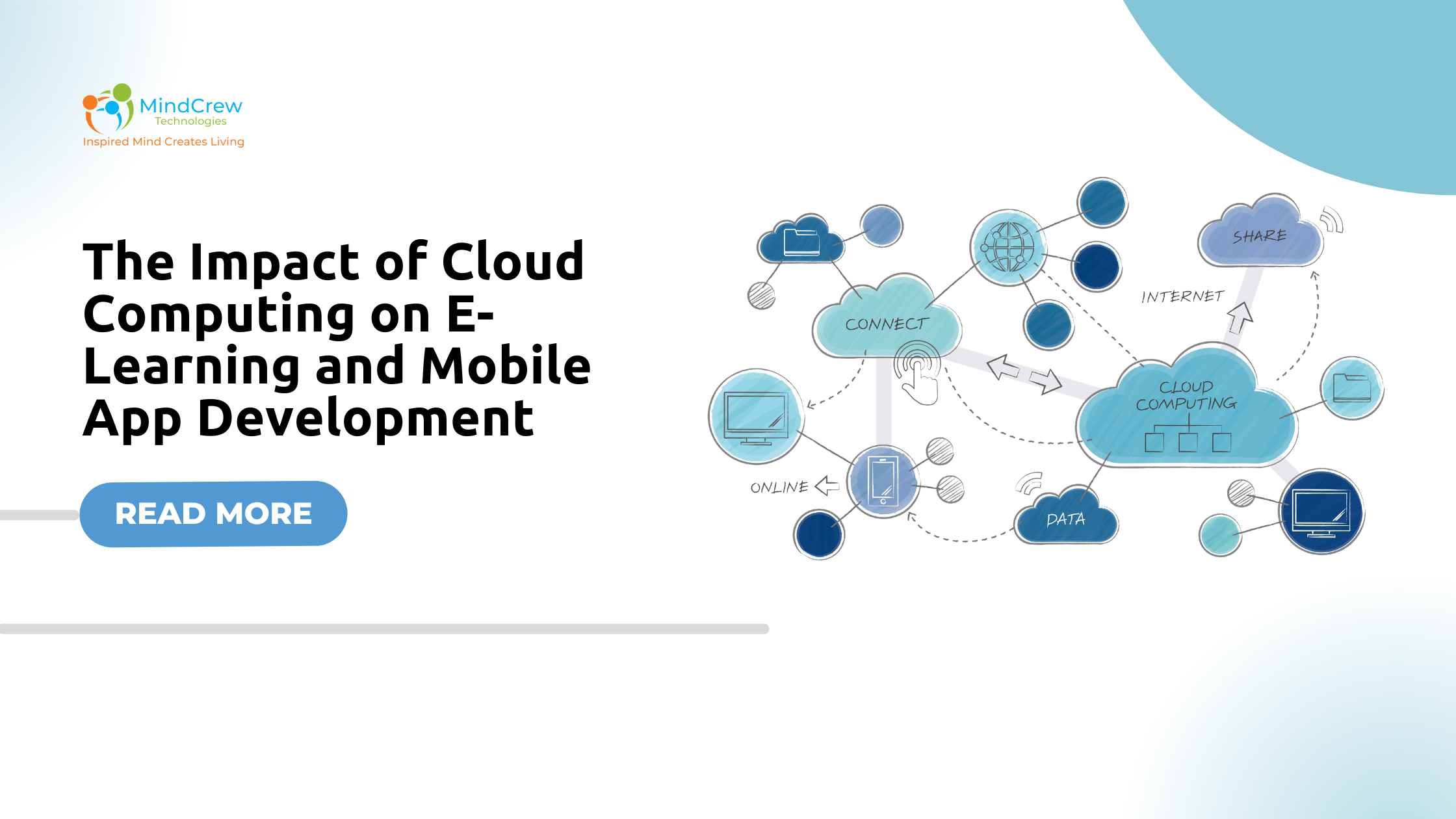The Impact of Cloud Computing on E-Learning and Mobile App Development
Cloud computing has revolutionized various industries, and e-learning and mobile app development are no exceptions. By leveraging the power of the cloud, both sectors have seen significant advancements in scalability, accessibility, cost-efficiency, and overall user experience. This blog will delve into the multifaceted impact of cloud computing on e-learning and mobile app development, exploring how this technology is shaping the future of these fields.
Introduction to Cloud Computing
Cloud computing refers to the delivery of computing services—including servers, storage, databases, networking, software, and analytics—over the internet (“the cloud”). This model allows for on-demand access to resources and services, eliminating the need for local infrastructure and reducing operational costs.
The Evolution of E-Learning with Cloud Computing
1. Scalability and Flexibility
Cloud computing provides unparalleled scalability for e-learning platforms. Traditional e-learning systems often struggle with fluctuating user demands, leading to performance issues during peak times. Cloud-based solutions, however, can easily scale resources up or down based on demand. This flexibility ensures a seamless learning experience, even during high traffic periods such as enrollment deadlines or exam seasons.
2. Cost Efficiency
Adopting cloud computing significantly reduces the costs associated with hardware, maintenance, and IT support. E-learning institutions can leverage cloud services on a pay-as-you-go basis, ensuring they only pay for what they use. This model is particularly beneficial for smaller institutions or startups that may not have extensive capital to invest in infrastructure.
3. Enhanced Collaboration
Cloud computing fosters collaboration among students and educators. Tools like Google Workspace and Microsoft 365 allow for real-time collaboration on documents, projects, and presentations. This collaborative environment mimics a physical classroom, enhancing engagement and interaction among participants.
4. Accessibility and Mobility
With cloud-based e-learning platforms, education is no longer confined to physical classrooms. Learners can access courses, resources, and assignments from anywhere with an internet connection. This mobility is crucial for remote learning, allowing students to continue their education regardless of geographical constraints.
5. Data Storage and Security
Cloud providers offer robust data storage solutions with high security standards. E-learning platforms can store vast amounts of data, including student records, course materials, and multimedia content, without worrying about physical storage limitations. Additionally, cloud providers implement advanced security measures, ensuring data integrity and privacy.
Transforming Mobile App Development with Cloud Computing
1. Streamlined Development Process
Cloud computing simplifies the mobile app development process. Development platforms like AWS, Google Cloud, and Azure provide comprehensive toolkits, including APIs, databases, and backend services. These tools streamline development, reducing the time and effort required to build robust mobile applications.
2. Continuous Integration and Deployment (CI/CD)
Cloud services support CI/CD pipelines, enabling developers to automate the testing, integration, and deployment of mobile apps. This automation accelerates the release cycle, allowing for faster updates and improvements. Continuous deployment ensures that apps remain up-to-date with the latest features and security patches.
3. Cross-Platform Compatibility
Cloud-based development platforms facilitate the creation of cross-platform mobile apps. Tools like Flutter, React Native, and Xamarin allow developers to write code once and deploy it across multiple operating systems, including iOS and Android. This cross-platform compatibility reduces development costs and ensures a consistent user experience.
4. Enhanced Performance and Reliability
Cloud infrastructure offers high performance and reliability for mobile apps. By distributing resources across multiple servers, cloud providers ensure minimal downtime and optimal performance. Load balancing and auto-scaling features further enhance app reliability, providing users with a seamless experience.
5. Data Synchronization and Real-Time Updates
Cloud computing enables real-time data synchronization across devices. This feature is particularly important for mobile apps that require consistent and up-to-date information, such as messaging apps, social media platforms, and financial services. Real-time updates ensure that users always have access to the latest data.
Intersection of Cloud Computing in E-Learning and Mobile App Development
1. Mobile Learning (m-Learning)
The combination of cloud computing and mobile app development has given rise to mobile learning (m-learning). M-learning apps leverage cloud services to deliver educational content on mobile devices, providing learners with flexibility and convenience. These apps often include features like offline access, interactive content, and gamification, enhancing the learning experience.
2. Personalized Learning Experiences
Cloud computing enables the collection and analysis of vast amounts of data, allowing for personalized learning experiences. E-learning platforms and mobile apps can use data analytics to tailor content, assessments, and feedback to individual learners’ needs and preferences. This personalization enhances learner engagement and improves outcomes.
3. Integration of Emerging Technologies
Cloud computing supports the integration of emerging technologies like artificial intelligence (AI), virtual reality (VR), and augmented reality (AR) into e-learning and mobile apps. AI can provide intelligent tutoring systems, personalized recommendations, and automated grading. VR and AR can create immersive learning environments, enhancing comprehension and retention.
4. Seamless Updates and Maintenance
Cloud-based platforms facilitate seamless updates and maintenance for e-learning systems and mobile apps. Providers can deploy updates centrally, ensuring that all users have access to the latest features and improvements without requiring manual installations. This approach reduces the burden on IT teams and ensures a consistent user experience.
Conclusion
Cloud computing has profoundly impacted e-learning and mobile app development, driving innovation and improving user experiences. By offering scalability, cost efficiency, accessibility, and advanced tools, cloud technology empowers educators, learners, and developers alike. As cloud computing continues to evolve, its integration with e-learning and mobile apps will undoubtedly lead to even more exciting advancements, shaping the future of education and technology.
In embracing cloud computing, e-learning platforms and mobile app developers can unlock new possibilities, fostering a more connected, efficient, and engaging digital landscape. Whether it’s through enhancing collaboration, ensuring data security, or enabling personalized learning experiences, the cloud stands as a cornerstone of modern technological progress.







